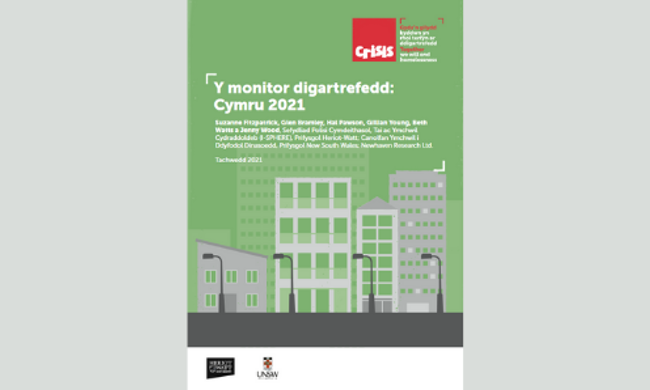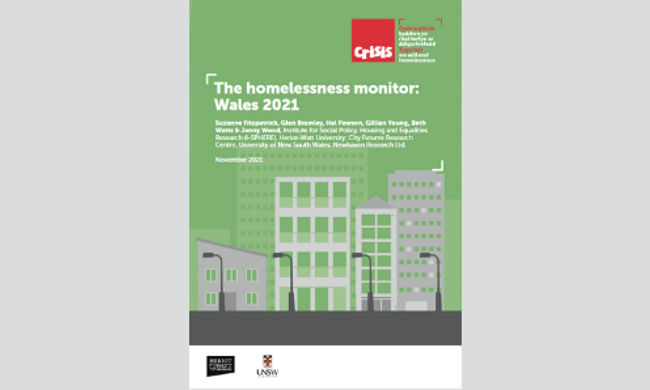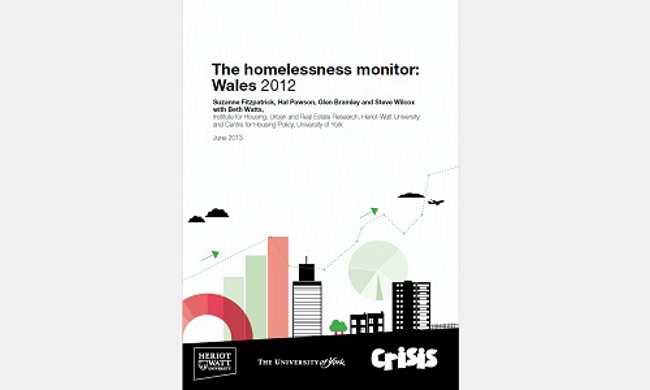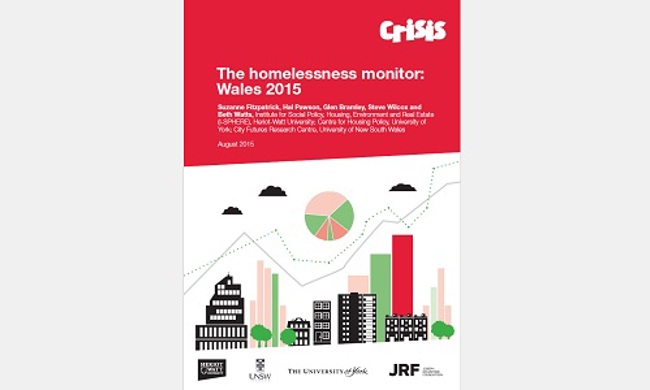The Homelessness Monitor: Wales 2025
10.04.2025
The Homelessness Monitor Wales: 2025 was commissioned by Crisis and led by Heriot-Watt. This is part of the Homelessness Monitor series, which provides an independent analysis of the homelessness impacts of recent economic and policy developments across Great Britain.
This fifth Wales-focused Monitor report takes a look at where homelessness stands in Wales, focusing particularly on the implementation of the Ending Homelessness in Wales High Level Action Plan, including planned extensive legal reforms, as well as the ongoing impacts of the cost of living crisis and pressures on temporary accommodation.
Key findings
These findings come from research methods including a survey of local authorities, interviews with key informants in the public and voluntary sectors, which took place in summer 2024. In addition, the research includes a statistical modelling exercise that estimates levels of 'core' homelessness and projects trends in these forms of homelessness into the future.
- Wales faces a challenging social-economic context in which to address homelessness. Persistent barriers to improving responses to homelessness include a lack of suitable housing options and a lack of staff capacity within local authority teams.
- The total number of households experiencing the most severe forms of homelessness (“core” homelessness, e.g. rough sleeping, sofa surfing, staying in hostels, refuges or unsuitable forms of temporary accommodation) is estimated to have stood at 12,250 households. Although rates of core homelessness in Wales are lower than in England, they have risen more sharply in Wales than in either England or Scotland.
- If current policies continue (not accounting for the proposed legal reforms), core homelessness will continue to rise in the short to medium term, and increase even more sharply in the longer-term.
- Modelling shows a comprehensive policy reform programme could reduce core homelessness in Wales by half compared to the baseline scenario by 2041, and drive unsuitable temporary accommodation down by 83%. Of those modelled, the most effective policies for reducing core homelessness in the immediate term are found to be increasing the share of social lettings to homeless households, raising Local Housing Allowance, and making changes to Universal Credit and other benefits to reduce destitution.
- The proposed legal reforms in the ‘White Paper on ending homelessness in Wales’ garnered widespread support from local authorities and key informants, particularly proposals to introduce new prevention duties to wider public bodies, and the extension of the local authority prevention duty to six months. Proposals to remove or alter intentionality, priority need and local connection tests generated concern from some local authorities who felt these changes would increase demand on their already over-stretched services, but were seen by key informants as essential to lowering barriers to assistance.
- Stakeholders supported the strengthening of homelessness prevention measures. This is reinforced by the modelling, which shows the limitations on prevention measures within the existing legislation.
Click on the PDFs below to read the executive summary or the full report in English and Welsh.
Y monitor digartrefedd: Cymru 2025
Technical report – the Homelessness Monitor Wales 2025
Reference:
Watts-Cobbe, B., Bramley, G., Sims, R., Pawson, H., Young, G., Fitzpatrick, S. (2025) The Homelessness Monitor: Wales 2025. London: Crisis.








